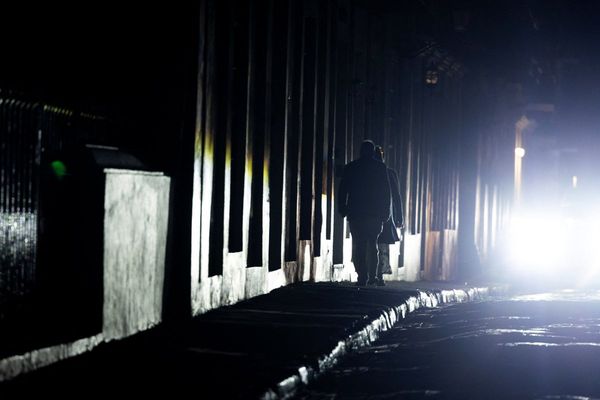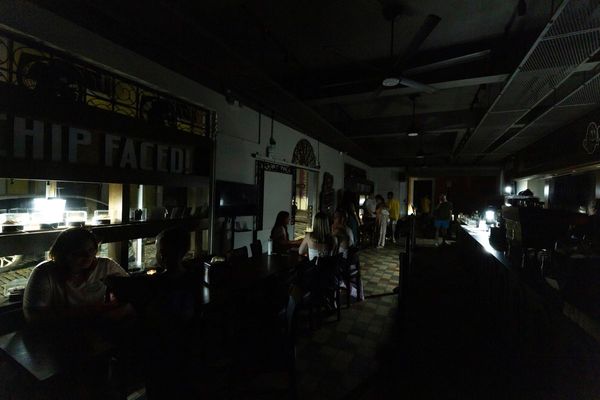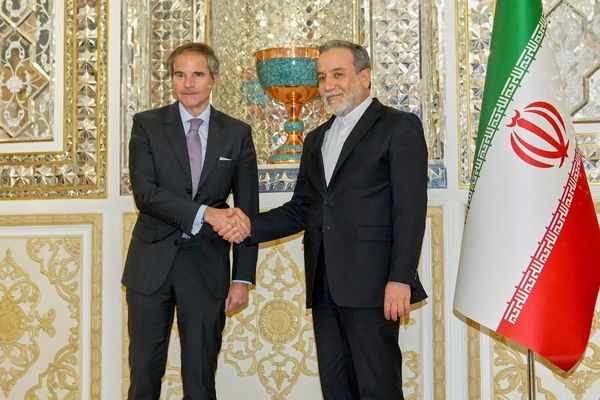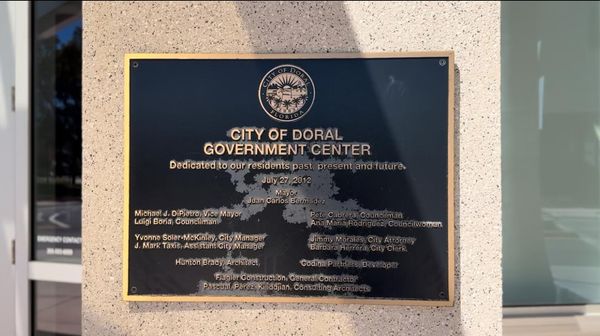
Well before tedious “it’s race week” social media posts cross drivers’ and teams’ minds, a construction crew arrives at a grand prix circuit to erect the Event Technical Centre tent. Five days are required to build this 375-square-metre temporary media headquarters but when ready, it will transmit 500 terabytes of data per race - 50 times that sent by the Hubble Space Telescope in a year.
With nine days to go, some 36 miles of cabling are laid at the circuit and 38 antennas installed in preparation for beaming up to 120 concurrent videos from track to TV. Four days later, 28 ultra high-definition cameras are unpacked to be mounted in barriers and on kerbs, 147 microphones are placed and 30 timing loops are hooked up around the lap.
PLUS: The Silverstone F1 legend brought back to life
The result is the F1 world feed: every angle of every major incident, each tug of the gearshift paddle matched to the corresponding engine audio and an embarrassment of riches when it comes to timing data and graphic overlays.
A new life for Biggin Hill
Given the scale of the operation that is required to meet the needs of 74 broadcasters around the world, a 130-strong F1 TV production crew is sent to each race. They are supported by 170 remote colleagues, who file into the refurbished Media & Technology Centre at the famous Biggin Hill base. With F1 consolidating its main UK operation in London, the Kent hub is now dedicated to serving a global audience of 1.5 billion.
The centrepiece at Biggin Hill is the main TV gallery room - kitted out with 415 multi-view monitors to provide thousands of screens’ worth of information. It’s box-fresh for this season, with the builders having set to work at 0600 the Monday after the 2022 Abu Dhabi GP finale to then have it completed on the eve of this year’s Bahrain opener.
For those staffing the gallery room during a race weekend, they must filter between up to 60 voices speaking simultaneously in their headset to ensure the pre and post-race show production and live broadcasts are as slick as can be. They’re quick to pick out the dulcet tones of Dean Locke, who joined in 1997 and has been serving as the director of broadcast and media for the last five years.
The main show directors are similarly experienced. This gives them a sound judgement of when to cut to a more discrete wide shot and then if it’s appropriate to start splicing in replays when all involved are declared safe after a fiery Romain Grosjean shunt or Zhou Guanyu rollover.

Those personnel at Biggin Hill are working with a 180 to 250-millisecond delay from what each camera operator at each corner is recording. This becomes 1.5s of latency for the fans who are paying attention to the trackside screens. Meanwhile, for those tuning into Sky Sports at home, the images are six or seven seconds behind real-world events.
TV graphics
Locke likens capturing the in-race drama throughout the F1 field to monitoring “20 balls on a really large pitch, all doing their own thing. That’s as opposed to football, where it’s one ball on a small pitch”.
When a particular flashpoint has been cut to, the world feed can then deploy some of the 15 to 20 graphic overlays - think the gear indicator, tachometer and speed readouts projected across the halo. These are supported by the 60 data points being transmitted per second from the circuit to Biggin Hill.
Bespoke advertisements can be augmented. This means the sponsor being digitally projected onto a grassy run-off area will be different in the UK than it will be for a Middle Eastern viewer
It is this wealth of information that also underpins the encrypted telemetry provided to each team, since it would be too inefficient for each squad to arrange their own loggers. The car performance data that underpins the TV feed is also available to the FIA.
While the wealth of data is relied upon by competitors and the governing body, those at the Remote Technology Centre must pair it back somewhat to cater for an audience of varying age groups and differing levels of F1 expertise or else risk alienating some viewers.
This flexibility is underlined by the way the world feed is adapted for each region. Bespoke advertisements can be augmented. This means the sponsor being digitally projected onto a grassy run-off area will be different in the UK than it will be for a Middle Eastern viewer. For F1, that enables it to satisfy more commercial partners - plus it spares freighting additional signage to each event.

Team Radio
The images only tell part of the story. Next door to the main gallery at Biggin Hill is the ‘team radio’ room. Here, the staffers must also deal with an immense of chatter as they intercept the 20 simultaneous conversations going on between drivers and their race engineers.
The feed is completely unfiltered - colourful language and all. In selecting clips for broadcast, the team manually transcribe (when they don’t want to interrupt the commentators) and asterisk the best bits.
There are exceptions, whether it be waiting for the action of a first lap to settle or a replay to finish, but the general rule is that messages must ‘tell the truth’ and be broadcast within a lap. This protects Biggin Hill from any allegations that specific communications could have been taken out of context for the benefit of pedalling a certain narrative. They’re not in the business of conjuring up a story that isn’t there.
But that doesn’t preclude the RTC from some element of intervention. If a driver is complaining and swearing too much to the point that it becomes repetitive and whiny, or what they’ve said may cause political fallout if it were to be broadcast, it’s kept off air.
Onboard cameras
Out the back of the Biggin Hill hangar sits the skunkworks where the onboard cameras are designed and maintained. Across the 20 cars, 90 cameras are fitted and up to 24 can be activated simultaneously to perfectly relay a head-to-head battle.
The video for each is encoded and time stamped so it can perfectly sync with the related audio feed captured by two directional microphones - with one placed externally next to the exhaust in a bid to amplify this breed of quieter turbocharged 1.6-litre hybrid V6s.
Any car can be fitted with up to five cameras for a combined weight of 1.7kg. Although this is equalised across all machines, teams are reluctant to agree to many more angles given any bonus kit could impact weight distribution and have some effect on airflow.

The favoured positions included both a forward- and rear-facing camera on the roll hoop and one mounted off the halo looking back at the drivers’ helmet in a series where the main stars are mostly covered up and hidden from view in their nest of carbon fibre. A camera on the side of the nosecone or chassis creates a greater sensation of speed. The main and spare safety cars are also kitted out.
Presently, and as it has been since the first onboards were trialled in 1989, this technology is mostly designed in-house. The unique demands of F1 mean the engineers cannot rely on off-the-shelf components. The championship is looking to adopt more outside technology and, in the meantime, there’s a close relationship and plenty of transferred technology with MotoGP and NASCAR.
The future of F1 broadcasting
In the four races leading up to the recent summer break, three new camera feeds (including a revised pedal cam) were piloted. The refinement of the broadcast is constant. And for the short- to medium-term future of the F1 production, it seems as though this continuous evolutionary - rather than revolutionary - approach will remain the order of the day.
Drones will be reserved for Saudi Arabian post-race light shows for now ahead of a more gradual integration into filming driver parades, formation laps and perhaps shooting a speed-limited pitlane skirmish or two
For one, F1 doesn’t have immediate plans to upgrade to 8k resolution, as per the delayed 2020 Tokyo Olympics. The series switched to 4k relatively recently and the trade-off for the extra data required for the crisper picture is inferior latency.
Regardless of the camera definition, the plan is for their operators to remain human. Despite the advancement in artificial intelligence, Locke passionately believes that his fleshy colleagues can capture superior shots and have greater judgement when it comes to instinctively reacting to first-lap drama and crashes. Plus, it’s easier to ask them to pull out a rag and clean a mucky lens. Unlike Champions League football or Wimbledon calling upon a rotating cast of freelancers, F1 relies on dedicated full-time camera operators who commit to 18 races per season.
There’s also scepticism over how robustly drones can be integrated into the set-up. F1 is too fast for these machines which are often capped at 120km/h. Also, battery life is too limited and it’s hardly practical to give a safety briefing to every member of the grandstands they would be flying over. What’s more, F1 is the most crowded sport when it comes to multiple radio frequencies transmitting within a confined space.
Instead, drones will be reserved for Saudi Arabian post-race light shows for now ahead of a more gradual integration into filming driver parades, formation laps and perhaps shooting a speed-limited pitlane skirmish or two.

Sooner than that, F1 must contend with an all-new race: the Las Vegas GP. The series has of course visited Sin City before in the 1980s. This time around, there’s plenty more neon-lit material to work with since the backdrop isn’t a drab car park.
In preparation, several pre-event recces have been carried out by the production crew to scope how the completed pit buildings might factor into the shot and what are the best vantage points to mount cameras.
Given it’s a street circuit, 13 track openings to aid public access must also be factored into planning the cabling. Similarly, since Vegas is most unlike the permanent Red Bull Ring, which sits in a natural bowl and is connected by service roads, in the gambling metropolis, the radio frequencies have a much shorter line of sight, so more equipment is required to achieve the same output.
Also, there are no lesser-viewed support races in which to refine the right angles and effectively rehearse before the main multi-million-dollar event gets underway.








